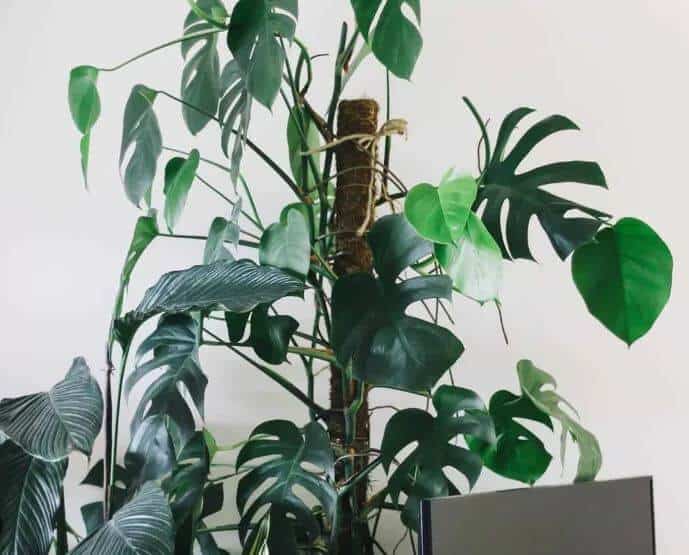Last Updated on January 5, 2023 by a Friendly Gardener
One of the most delightful aspects of cultivating a Monstera is this plant’s capacity to grow and climb! The Monstera will not simply grow upward but it will expand outward, so one option for maintaining some control over your plant is by training it to climb rather than allowing it to trail.
The tropical Monstera deliciosa finds its home in Central and South America, and is commonly called the “Swiss Cheese Plant”. Large leaves with heart-shaped foliage will develop holes known as fenestration as they mature, hence its name.
Belonging to the Araceae family the plant genus is “Monstera”. One of the commonest of the Monstera plants is the Monstera deliciosa, known as a Split-leaf Philodendron, with lobed leaves and long holes.
This tropical perennial is very easy to care for and popular for this reason. But it’s trailing/climbing nature means it needs a bit of training. So, plan on integrating support for your plant to cling to. The Monstera is a rapid grower and can achieve impressive heights very quickly.
How Can I Get My Monstera to Climb?
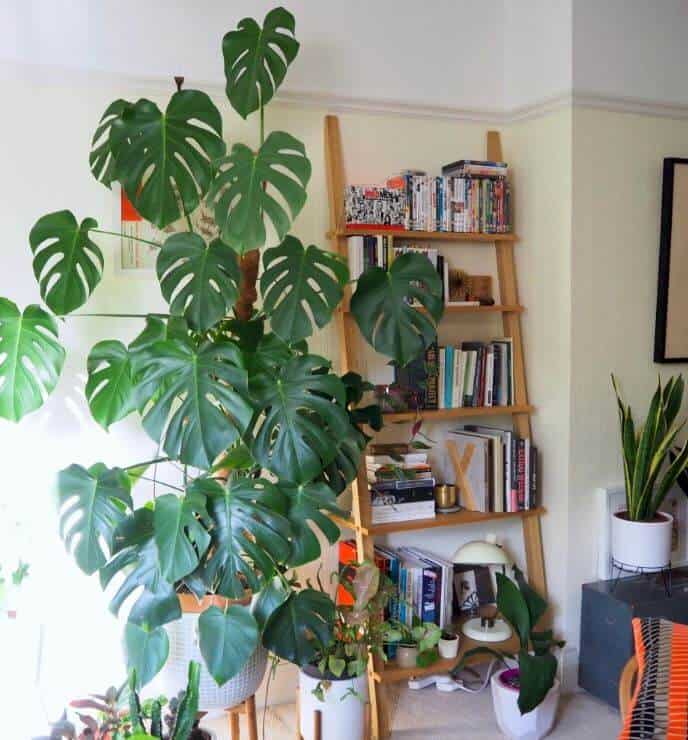
For a Monstera plant to climb it will need good support and some type of structure to attach itself to. Appropriate structures include moss poles, trellises, coco coir poles, or similar, to aid your monstera to grow in an upward direction. Growth support will encourage your plant’s natural tendencies and contribute to its overall health.
Why Does a Monstera Need Climbing Support?
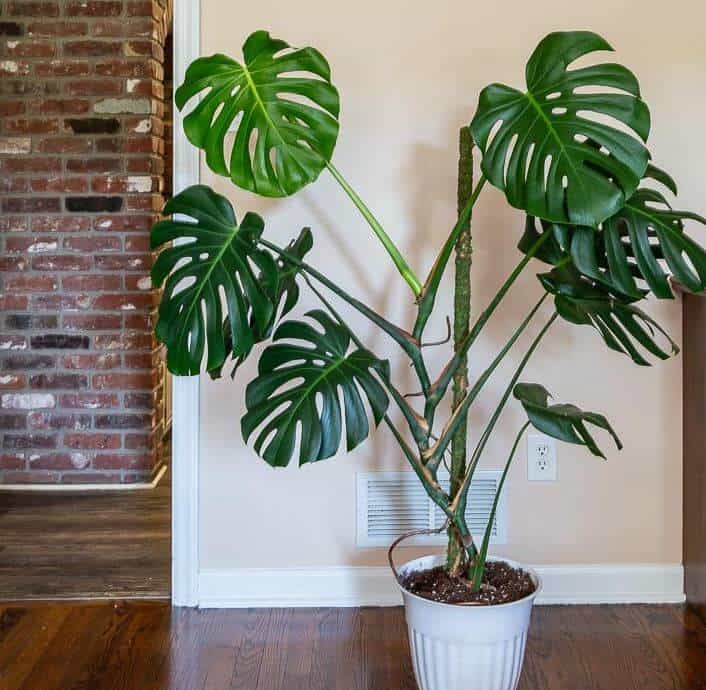
In the Monstera’s natural habitat, it will exhibit a growth habit similar to epiphytes. Epiphytes attach themselves to trees and other vegetation and climb. Other houseplants that can climb include the popular Pothos or Philodendron, but these two plants are most often employed as trailing plants in hanging baskets. Monstera is less adaptable to hanging because of their size and weight.
As most of us do not have trees or similar structures that a climbing Monstera plant can latch onto, providing climbing support in the form of a trellis or a pole becomes crucial if you want your plant to grow in an upright direction. The Monstera can grow without support, but it will not grow upwards. It will cascade down over the sides of its container and head toward the floor.
How to Train Monstera

A young Monstera will appear to grow vertically in the beginning. As the plant matures and becomes heavier, it will grow sideways and outward. Left to its own devices, it will require more horizontal space as it grows.
How to help a Monstera climb will require support such as stakes, trellises, coco coir poles, or moss poles. However, a Monstera can adapt to any type of climbing support you provide.
Pruning
Begin preparations for training your Monstera by pruning new growth that moves in an undesirable direction. Pruning is the first step in training your plant to only grow in a vertical direction. You may be hesitant about trimming your Monstera, but this kind of pruning serves a dual purpose. You will keep your plant to a size that is more manageable and begin training it to move upward.
Light Source Rotation
Another trick for getting your plant to grow vertically is to use the plant’s natural inclination to grow toward a light source. If your plant is growing new foliage, rotate it so that the new leaves are facing away from the window or light source. In this way, new growth will develop toward the center of the plant and create more balance.
Adding a Support Structure
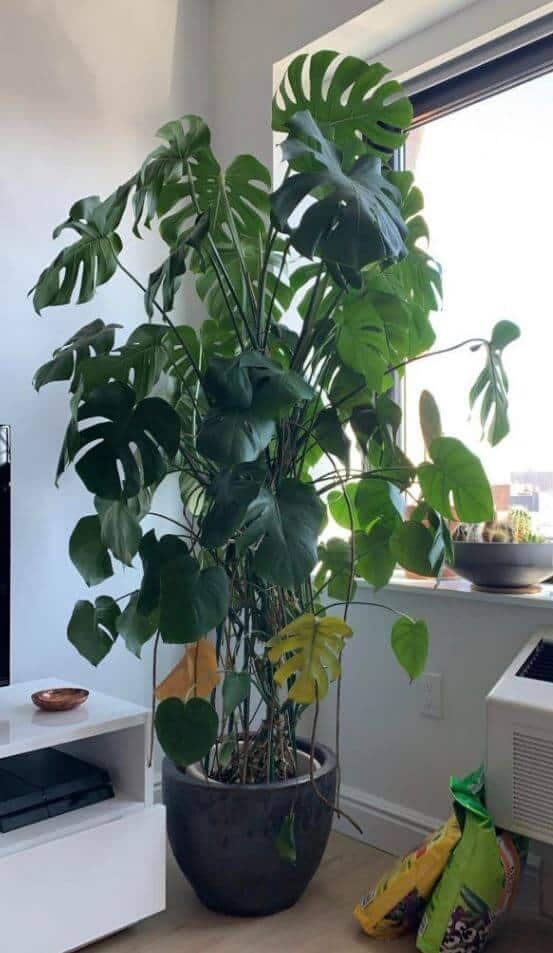
Once you have decided on your preferred support structure, you may be wondering when the best time is to introduce it into your plant’s container. The appropriate time to add a support structure is when your plant becomes top-heavy or begins to expand horizontally needing more outward space. Aerial root growth will also indicate it may be time to get that support structure in place.
It’s reasonable to assume that it’s never too early to introduce plant support for a Monstera, so if you have any doubts, go ahead, and add your pole or trellis as support will not have a negative effect on your plant. On the contrary, as the plant matures and develops aerial roots, it will find a support pole to latch onto during growth.
Waiting too long can be exceptionally challenging. Not only will you have to introduce the pole or trellis, and this may require a larger container and repotting, but it will not be as easy to train a mature plant to grow in a new direction.
Making a Monstera Climb
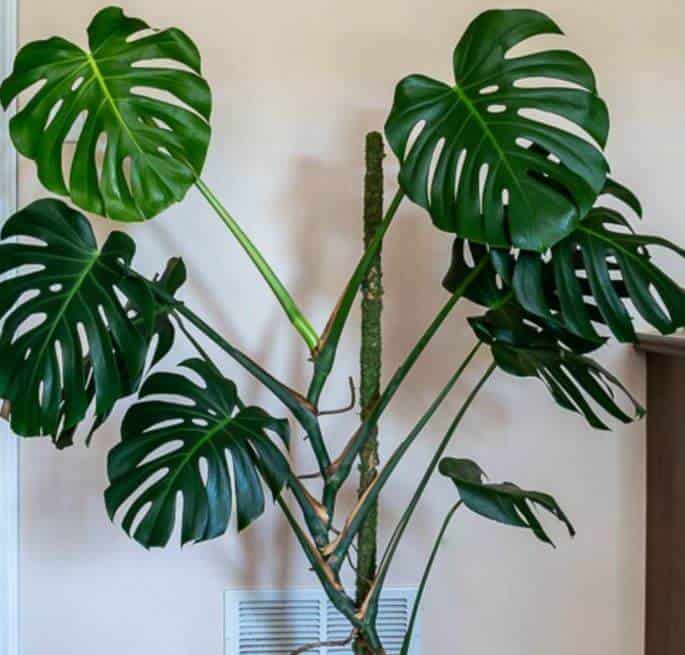
Monsteras will climb spontaneously in their natural habitat, but they do require time before aerial roots develop and latch onto a support. In their natural habitat, the Monstera will latch onto whatever tree or vegetation is the nearest meaning that the plant will find support from the very beginning of its life cycle.
To train your Monstera to climb, a support structure should be introduced as soon as aerial roots begin to develop. However, positioning a support pole does not mean that the plant will automatically gravitate toward it. If the aerial roots are close enough, they may attach, but your plant may need some guidance.
The use of a moss pole or coco coir pole is ideal because of the natural texture that roots can latch onto, and they look very natural in a plant container. Trellises come in various materials, so you can select one that harmonizes with your indoor décor. Regardless of which type of support you select, it must be sturdy enough to support the growth of the plant.
Attaching Your Monstera Plant
Attaching your Monstera plant to a support structure requires anchoring the heaviest stems. This may require some effort as heavier mature stems will not be particularly flexible. Garden ties or similar are excellent for attaching stems. As the stem adheres to the structure and grows in the desired direction, ties can be shortened.
To encourage aerial roots to latch onto support poles, try to wrap the plant around the support. Again, gardening ties can be used to help the roots attach. Eventually, these roots should attach where they touch the support structure.
It’s important that when using gardening ties, you achieve the correct tension. Ties should not be tied so tight that the plant is damaged, however, stems must be securely tied.
Once your plant adheres to the support structure, garden ties can be removed, or they can be left on permanently. As new growth appears, it should continue to climb, but watch your plant as Monsteras may need further training and encouragement to fully develop its climbing instincts.

